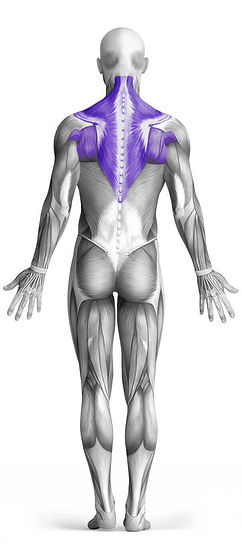Cable One Arm Bent Over Row 101 Video Tutorial
0

Exercise Synopsis
Target Muscle Group
Upper Back
Execution
Compound
Force Type
Pull
Required Equipment
Cable Machine
Fitness Level
Intermediate
Variations
Alternatives
None
Timer
Hour
Minute
Second
Stopwatch
00:00:00:00
Overview
The Cable One Arm Bent Over Row is a compound pulling exercise that primarily targets the upper back, while also engaging the lats, traps, and biceps as secondary muscles. Using a cable machine, this movement allows for continuous tension throughout the range of motion, promoting muscle activation and control. To perform the exercise, the lifter bends at the hips while keeping a neutral spine, pulling the handle toward their torso in a controlled manner. This movement helps improve upper-body strength, posture, and muscular endurance, making it a great addition to any back-focused workout routine.
How to Perform
Position Yourself Properly – Stand with your feet shoulder-width apart for a stable base. Grab the cable handle with one hand using an overhand grip, ensuring your stance allows for balance and control.
Engage Your Core and Hinge Forward – Slightly bend your knees and hinge at your hips to bring your torso forward while keeping your spine neutral. Your core should be engaged to maintain stability and protect your lower back.
Fully Extend Your Arm – Let your working arm stretch out in front of you while keeping it close to your body. This ensures a full range of motion and prevents unnecessary strain on your shoulder.
Initiate the Pull with Control – Drive your elbow back as you pull the cable towards your torso, making sure to squeeze your shoulder blade at the peak of the movement. Keep the motion smooth and controlled to maximize muscle engagement.
Hold and Contract – At the top of the movement, pause briefly and focus on contracting your upper back, lats, and traps before moving into the next phase.
Lower the Handle Slowly – Gradually extend your arm back to the starting position, ensuring you maintain tension on the muscles rather than letting the weight snap back.
Repeat and Switch Sides – Perform the exercise for the desired number of repetitions, maintaining proper form throughout. Once completed, switch to the other arm and repeat the same sequence.
★ Bonus: For exercises that involve external weights (such as dumbbells, barbells, or machines), the One Rep Max (1RM) calculator can help you estimate your maximum lifting capacity. Use it to track your strength progress and adjust your training for optimal results.
Tips
Maintain a Neutral Spine – Keep your back straight and core engaged to prevent strain on the lower back.
Hinge at the Hips – Slightly bend your knees and lean forward while keeping your torso stable.
Grip the Handle Firmly – Use an overhand grip and keep your wrist neutral throughout the movement.
Pull with Control – Drive your elbow back while keeping your arm close to your body, focusing on contracting the upper back.
Squeeze at the Top – Hold the peak contraction for a moment to maximize muscle engagement.
Lower the Weight Slowly – Control the movement on the way down to maintain tension and avoid jerking motions.
Avoid Using Momentum – Do not swing your body; focus on using your back muscles to pull the weight.
Breathe Properly – Inhale as you extend your arm, and exhale as you pull the cable toward your torso.
Maintain Even Weight Distribution – Keep your feet firmly planted to ensure stability and balance.
Repeat with Proper Form – Perform the movement with controlled reps, then switch sides to ensure balanced development.
How Not to Perform
Do Not Round Your Back – Avoid hunching or arching your back, as this can strain your lower back and reduce the effectiveness of the exercise. Keep your spine neutral and core engaged.
Do Not Use Momentum – Swinging your body or jerking the weight reduces tension on the target muscles and increases the risk of injury. Perform the movement in a slow, controlled manner.
Do Not Overextend Your Arm – Fully extending your arm is important, but do not lock your elbow at the bottom, as this can put unnecessary stress on the joint.
Do Not Shrug Your Shoulder – Keep your shoulder down and relaxed. Shrugging shifts the focus away from the upper back and lats, reducing the effectiveness of the movement.
Do Not Pull with Your Wrist – Keep your wrist neutral and avoid curling or twisting it. The pull should come from your elbow and upper back, not from your forearm or wrist.
Do Not Rush the Movement – Performing the exercise too fast can lead to improper form and reduce muscle engagement. Take your time with both the pulling and lowering phases.
Do Not Stand Too Upright – Failing to hinge forward at the hips will shift tension away from the back muscles and limit the range of motion. Maintain a proper bent-over position.
Do Not Neglect Breathing – Holding your breath can reduce stability and cause unnecessary tension. Exhale as you pull the cable and inhale as you extend your arm.
Do Not Use Excessive Weight – Lifting too heavy can compromise form, cause strain, and lead to injuries. Choose a weight that allows full control while maintaining proper technique.
Do Not Skip Switching Sides – Always train both arms evenly to avoid muscular imbalances and ensure balanced strength development in your upper back.
Variations
Variations of fitness exercises refer to different ways of performing a specific exercise or movement to target various muscle groups, intensities, or goals. These variations aim to challenge the body differently, prevent plateaus, and cater to individuals with varying fitness levels.
Alternatives
Alternative exercises in fitness refer to different movements or activities that target similar muscle groups or serve the same training purpose as the primary exercise. These alternative exercises can be used as substitutes when the original exercise is unavailable or challenging to perform due to various reasons such as equipment limitations, injuries, or personal preferences.








